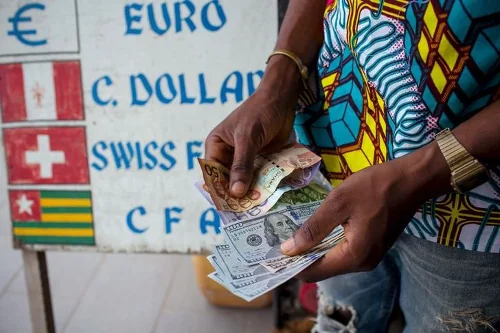Almost 30 years ago, South Africa became the first African country to issue a Eurobond – a bond issued in a currency different from the currency of the country it was issued. As of August 2023, Africa had 91 outstanding Eurobonds across 19 different countries. So, what does all this mean for Africa’s current, and future debt levels, and access to fresh finance? Let’s start with some initial data.
First, it’s important to note that these 91 Eurobonds are not equally distributed. Indeed, these 19 countries have a combined face value of US$111 billion, however, 71% of these Eurobonds on the continent have been issued by five countries Angola, Egypt, Ghana, Nigeria, and South Africa.
Second, Africa’s Eurobonds represent a significant portion of external debt for some countries, with countries like Egypt (11.78% of GDP), Nigeria (5.94%), Ghana (24.02%), Angola (19.05%), and South Africa (7.40%), holding the majority bonds.
Third, looking to the future, between August 2023 – September 2061, African countries are projected to pay US$200bn in Eurobond debt service costs. If we compare this with Africa’s total debt to China for instance in 2022 which was USD 62.89 billion in bilateral debt and USD 24.38 billion in private debt it is clear that for many countries, Eurobonds are putting a massive strain on their economies.
Fourth, the high yield to maturity rates (YTM), which is the expected return on a Eurobond if held to maturity, for some African countries further exacerbate borrowing costs. For instance, Ghana faces an exorbitant YTM rate of 81%, Ethiopia 47% and Tunisia 37%. Although the high return on investment is great for bondholders, due to high interest rates and short maturity, ultimately, it is African countries, in particular the citizens, that will face the challenge of paying off that high return.
We have four key recommendations:
Working together for a Borrower-Centric System: African countries need to examine their creditors collectively, understand commonalities and differences, and coordinate at times of financial strain. Much like the borrower’s “London Club” African countries need to work together to ensure their access to improved financial architectures.
Improving Eurobond Issuance Terms: African countries should learn from Egypt’s shift to longer-term Eurobond maturities. By extending these timelines, annual coupon payments are spread over a longer period, providing more fiscal space and reducing debt default concerns.
Debt Buy-Backs: Governments should consider debt buy-backs to manage debt service payments. Repurchasing debt at lower interest rates can lead to interest cost savings and reduce vulnerability to economic shocks. This strategy is particularly relevant for the next four to five years, especially for countries with high yield-to-maturity bonds.
Operationalise the African CRA: There has been a significant push for the establishment of an African CRA that can provide a more objective and fair assessment of African economies compared to the ‘Big Three’ which can result in lower interest rates and higher maturities for African Eurobonds. Read our full report, “Africa and Eurobonds- How many Eurobonds does Africa have and how might it impact their budgets in the future?” here.
NB: This graphic uses data as of 2023.

At Development Reimagined, we’re dedicated to transforming the global conversation on development by expanding the reach of innovative perspectives that put Africa first. Hence, we welcome and permit you and your media organization to quote, link to, and/or comment on our research reports and visual analytics on your organization’s website or social media posts under the condition that you provide proper attribution including reference by name to Development Reimagined and a link to the source on the DR website, for any text, charts, images, or other DR content you use.
To find out how Development Reimagined can support you, your organisation or Government to review key economic policies, please email the team at clients@developmentreimagined.com.
Acknowledgements: Special thanks go to Jade Scarfe, Rugare Mukanganga, Marry Ghenna and Etsehiwot Kebret for their work on the graphics, collecting/analysing the underlying data and sharing this accompanying article. The data was collated from the Bloomberg Terminal’s Fixed Income Securities dataset (August 2023), as well as the World Bank’s DataBank. Our methodology is entirely in-house, based on analysis of economic growth, inflation and other trends.


